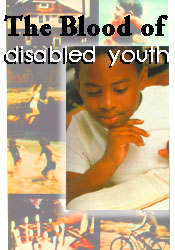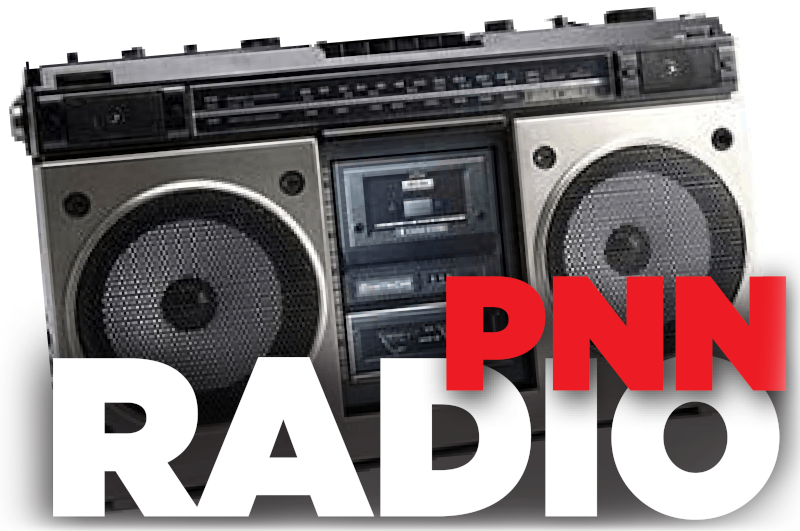Leroy Moore speaks out against crimes against disabled youth of color
 |
|
by Leroy Moore Buried Voices The next generation Little ones snuggled Voices from down under Buried voices speaking in harmony Hunting the soulless Years of abuse Black, young and disabled Elders set in their ways Christopher, Seth and Dion Layer after layer Buried voices are singing in the cemetery Buried voices rising with the sun Now everybody is scared Parents, teachers and politicians Buried voices I write with the blood of disabled youth And they told me to tell you Poems can't bring them back from the dead The truth hurts But I feel the tension What the hell is going on? Can you answer me? First, it was disabled adults of color. Now, disabled youth of color are under attack in schools and on the streets. Do you hear that? Disabled youth are yelling and crying for help and attention. Are we going to go on like everything is o.k.? Well I'm here to tell you everything is not O.K. The next generation of disabled leaders won't be if we continue our silence on the street violence and abuse that has been a reality to many. In November of this year I came across three cases in San Francisco mainstream newspapers dealing with street violence, rape and physical abuse of disabled youth. All three cases have similarities and differences. All three appeared in the San Francisco Chronicle, the victims were all disabled youth of color and all three victims were overpowered by more than one person or an elder. The first case was the long-,awaited court case and verdict of a 1995 beating and stomping attack of Seth Woods, an African American, mentally disabled young adult. Seth Woods was attacked by five Samoan youths while walking home. After five years of waiting, the Woods family received their justice. On November 9th a San Francisco jury returned verdicts of second-degree murder, torture and sodomy. The second case is recent and very heartbreaking. A twelve-year-old African American girl with learning disabilities was sexually assaulted at two different schools in Berkeley, CA. The first assault involved nine classmates and took place after school on October 25th. According to the news reports, a pack of nine boys allegedly dragged the girl to 11 different locations, sexually assaulting her for more than four hours. Then, on Nov. 8th, her second day at a new school in Berkeley, a 13-year-old lured the girl to a secluded area on the school campus and raped her. I came across the most recent case when I confronted a headline at breakfast screaming "Police Probe, S.F. Boys Claim Teacher Threw a Yardstick at Him." At that moment I dropped my spoon in my oatmeal and screamed, "What in the hell?" The article said that a sixth-grade special education teacher threw a yardstick at a 9-year-old special education student. The stick hit the boy's face and caused scratches under his right eye and on his nose. Now the teacher is placed on leave, pending an investigation by the district. The above cases are only recent cases, but this is not a new trend. In 1988 Tony G., a 13-year-old Samoan boy with Down Syndrome, was walking home with his favorite toy, a toy gun. A San Francisco police officer thought the gun was real, so he shot and killed him. These cases are not only in California. The unbearable story of Marcus Hogg of Texas made me cry. In June of this year Hogg, an African American disabled teenager was approached by two white teens who proceeded to tie his hands behind his chair and his legs to the legs of the chair. Then the two teens placed a noose around his neck and joked about throwing the rope over the rail to hang him. Like my articles on the abuse and brutality toward disabled adults of color, the above issue has been hush-hush in the disabled communities and communities of color. So what is the answer to the violence and brutality towards disabled, especially those of color? I have been hearing that disabled youth should not be mainstreamed with their non-disabled peers. Parents and people with disabilities fought for the Individuals with Disabilities Education Act (IDEA) and other special education laws that promote and support the rights of parents and disabled youth to receive a free appropriated education along side their non-disabled peers. We have been fighting too long to return to "separate but equal," to be locked away in institutions. What we need in both public and private schools is formal collaborations with grassroots organizations that have the skills and experience to advocate and educate the student body and the administration. Teachers, students, school administrators and principals can all benefit from hands-on workshops, awareness trainings and classes on disability rights, history, culture, self-esteem building, role play etc. from organizations like The Race, Poverty and Media Justice Institute that are led by disability scholars who have experienced these situations first-hand. The issue of a lack of hands-on training is a common factor across the board, from police to teachers, on how to deal with people, students and youth offenders with disabilities. We need to adopt a proactive stance towards educating and training our youth, teachers, police force, politicians and our community at large about people with disabilities and our issues. Right now we have walls between our schools and the community. We can't afford to lose one more disabled youth. |



